Romeo and Juliet in Opera and Ballet | reviews, news & interviews
Romeo and Juliet in Opera and Ballet
Romeo and Juliet in Opera and Ballet
A guide through the versions of the most popular lovers' tragedy of all time
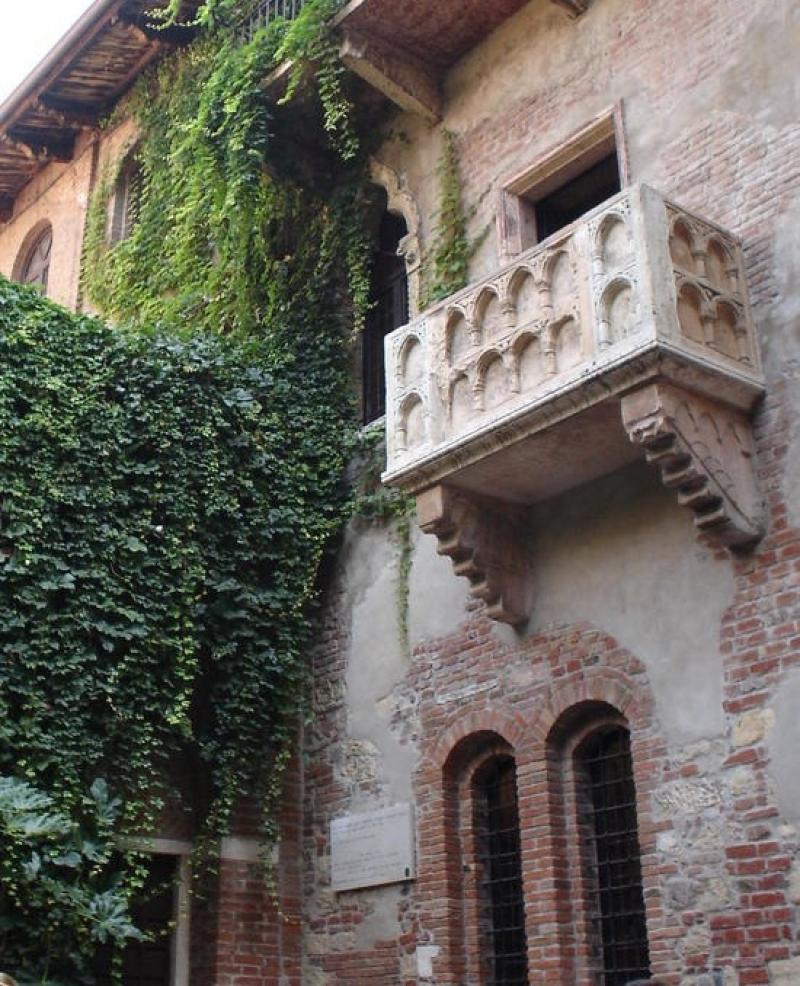
Those teenage lovers Romeo and Juliet will be dying nightly on a stage near you in various guises for much of the autumn - not as Shakespeare’s play, but as ballets and operas based on it. Next week both Birmingham Royal Ballet and English National Ballet field two of the more famous versions on their autumn tours, while at the end of the month the Royal Opera stages a rare revival of Gounod’s opera.
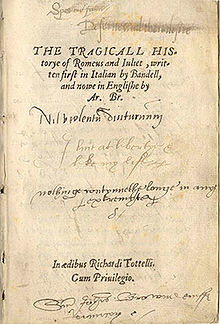 Shakespeare’s play was premiered in 1596 - not until 1776 did the first opera on it emerge, Romeo und Julie by Georg Benda, a near-contemporary of Haydn and Kapelmeister to the Duke of Gotha who commissioned the staging. Benda’s works were in the melodrama style, spoken words to instrumental music. The first ballet came soon after in Venice in 1785.
Shakespeare’s play was premiered in 1596 - not until 1776 did the first opera on it emerge, Romeo und Julie by Georg Benda, a near-contemporary of Haydn and Kapelmeister to the Duke of Gotha who commissioned the staging. Benda’s works were in the melodrama style, spoken words to instrumental music. The first ballet came soon after in Venice in 1785.
The story was not Shakespeare's own; he borrowed heavily from two previous versions, the earlier of which - Arthur Brooke's The Tragicall Historye of Romeus and Juliet in 1562 - was a translation of a still earlier Italian original.
The Operas
Romeo et Juliette (Charles-François Gounod, 1867)
Described by Rupert Christiansen’s Faber Pocket Guide to Opera as “the most successful of some 40 operatic adaptations of Shakespeare’s play... it has now become a vehicle for glamorous star couples”. The opera sticks closely to the Shakespeare, with four separate lovers’ duets, and a closing scene in which Juliette wakes in time for a reunion duet with the dying Romeo and kills herself as he expires. Both vocal roles are high, with a challenging coloratura waltz for Juliette’s first song, "Je veux vivre dans ce rêve", and one aria for Romeo that is often transposed down a semitone, "Ah! Lêve-toi, soleil". But Juliette must also produce a darker, more dramatic sound for the scene where she takes the sleeping potion. The five-act opera is some four hours long, and is often edited down.
It premiered in three world cities in 1867; in Paris’s Théâtre-Lyrique, with Marie Miolan-Carvalho and Pierre-Jules Michot in April, at Covent Garden in July, with Adelina Patti and Giovanni Mario, and at New York’s Academy of Music in November, with Minnie Hauck. An onstage romance between one Romeo and Juliette in 1867, Adelina Patti and Ernesto Nicolini, was revealed as an offstage one too when during one performance’s balcony scene they kissed each other on the lips 29 times. Although both married to others, they freed themselves in order to marry, and settled in Wales where she built a castle, Craig-y-Nos.
The Royal Opera's production has not been seen for more than 10 years, but it was a famous vehicle for the glamorous Angela Gheorghiu-Roberto Alagna partnership.
- The Royal Opera performs Roméo et Juliette at the Royal Opera House, London, 26 Oct-17 Nov
- 1994 Royal Opera recording of Joel production with Roberto Alagna and Leontina Vaduva conducted by Sir Charles Mackerras
- See what's on at the Royal Opera in 2010-11
Watch Gheorghiu sing "Je veux vivre" in a 2003 Czech video, with Alagna:
Other Romeo and Juliets in music
Bellini’s 1830 opera I Capuleti e i Montecchi (the lovers are sung by two women, soprano and mezzo-soprano).
Berlioz’s 1838 dramatic symphony for soprano, tenor, bass, chorus and orchestra, Romeo and Juliet.
Tchaikovsky’s 1869 fantasy-overture for orchestra, Romeo and Juliet.
Delius’s 1907 opera A Village Romeo and Juliet (based on a short story by Gottfried Keller).
Prokofiev’s 1935-6 ballet score - see below.
Next page: Ballets on Romeo and Juliet
The Ballets
The first recorded ballet on Shakespeare’s romantic tragedy was in Venice in 1785 (created by Eusebio Luzzi) but only one further ballet was created on the subject, in 1811 in Copenhagen, until the 20th century undammed a tidal wave of Romeo and Juliet ballets. It was a new world now beginning to see how to take the physical passion of the story head on in choreography that was fast moving on from 19th-century classical academicism.
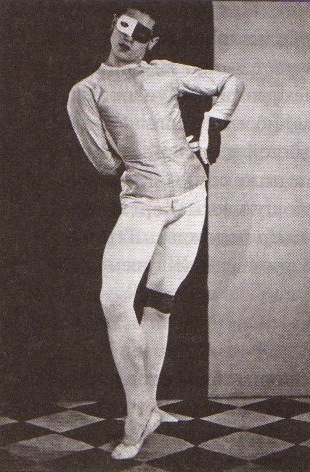 Bronislava Nijinska (Ballets Russes, Paris, 1926, music Constant Lambert).
Bronislava Nijinska (Ballets Russes, Paris, 1926, music Constant Lambert).
Starred Tamara Karsavina and Serge Lifar (pictured left). Designed by the surrealists Max Ernst and Joan Mirò, whose decor was thought by viewers more interesting than either the choreography or the music, this was the first ballet score by the very young Constant Lambert (who would become the Sadler’s Wells Ballet’s musical director with de Valois). The music was actually written as “Adam and Eve”, but it was arbitrarily retitled by Diaghilev - and despite the composer's protests given a scenario of a rehearsal of a ballet based on Shakespeare’s play.
Furious demonstrations attended the premiere, ignited by the unexpected opening sight of dancers in practice clothes at the barre. The scenario was intended to shock: during rehearsals for R&J the leading dancers forget their steps and fall in love. The “performance” is danced in Renaissance costumes. After the “death” the lovers elope in airmen’s goggles by plane. There were frightful ructions between young Lambert and Diaghilev. Lambert hated the presentation and ideas of “10th-rate painters from an imbecile group called the 'Surrealistes'.”
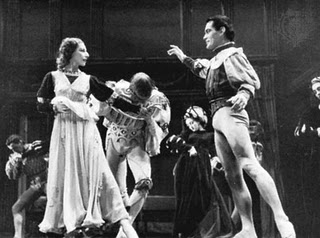 Antony Tudor (Ballet Theatre, New York, 1943, music Frederick Delius)
Antony Tudor (Ballet Theatre, New York, 1943, music Frederick Delius)
Starred Alicia Markova and Hugh Laing (pictured right), New York’s great British emigrés. Fokine had been engaged to do the subject in 1942, but when he died Ballet Theatre asked Tudor, an East Londoner who had left Rambert for New York to make his career, to take over. He “wanted it in the feel of the Shakespearean theatre... like the Globe. Then I had to look for the music. I felt that the gentle folk melodies that are sprinkled through the music of Delius were terribly reminiscent of a lot of Italian melodies...” He first asked Salvador Dalì to do designs “in terms of Fra Angelico”, but “Dalì’s ideas did not harmonise with mine”. Markova recalled that Dalì “projected a giant set of false teeth supported by crutches for the balcony scene”. Instead Botticellian sets by Eugene Berman were made.
The version was notable for keeping the lovers apart in the balcony scene, miming their ecstasy to each other. Also that Juliet awakes to find Romeo dying and they are briefly united before he dies and she kills herself. Critical reaction was that it felt too “verbal”, too lacking in dance, but it came into greater acclaim on revivals in the early Seventies, where later US critics preferred its fastidiously sensual and lyrical intimacy to the spectacular scale of the Cranko, MacMillan and Nureyev epics to Prokofiev.
Sergei Prokofiev
Prokofiev may be popularly familiar for his ballets, Romeo and Juliet above all, but he considered ballet scores far lesser than operas. Where with operas he could create works without thinking of production practicalities (leaving them to be solved by the stagers), for ballet he was obliged constantly to follow others’ orders and needs. He followed Stravinsky to Diaghilev’s Ballets Russes where he longed to write radical new opera, but was required by Diaghilev to abandon that old-fashioned form and do more ballets.
His boldest ballet score, from 1916, the atavistic, jagged Ala and Lolli, was kept on the shelf by Diaghilev for lack of a proper dramatic scenario, and because it appeared to him too closely to imitate Stravinsky’s Rite of Spring, but Prokofiev had great concert success with the orchestral suite he arranged from it, Scythian Suite.
By the time Prokofiev wrote Romeo and Juliet, it was 20 years later and he was back in the Soviet Union, where radical ideas were heavily filtered. Melody was desired, and Shakespeare was in fashion in the Soviet Thirties. Prokofiev was anxious to find his own voice, even within the constraints: “The main thing”, he wrote to fellow composer Nikolai Miaskovsky, “is to avoid falling into ‘Asafievism’, the path of least resistance.” The Kirov Ballet had originally asked for it, but then backed out and Prokofiev signed to the Bolshoi, with a libretto that rejected the tragic ending (as the Soviet authorities ordered with Swan Lake - tragedy on stage was considered by Stalin to be antisocial), so Prokofiev composed a joyful awakening pas de deux for the lovers. As rehearsals proceeded more and questions were raised by dancers and choreographers about the rhythmical complications of the music, eventually putting the entire thing on hold. Prokofiev wrote of the events: "There was quite a fuss at the time about our attempts to give Romeo and Juliet a happy ending... The reasons for this bit of barbarism were purely choreographic: living people can dance, the dying cannot... What really caused me to change my mind was a remark someone made to me about the ballet: 'Strictly speaking your music does not express any real joy at the end.' That was quite true."
The Leningrad Ballet school then came back in 1937 asking for it, as did the enterprising Brno Opera Theatre in Czechoslovakia. Again, Leningrad “violated the contract”, according to Prokofiev, and he permitted Brno’s leading dancer Ivo Vana Psota to stage the first production in Czechoslovakia, with himself as Romeo. This rapidly called the Soviet ballet authorities to their senses, the Kirov pulled rank, Brno gave the music up, and Leonid Lavrovsky created the celebrated “official” premiere production in January 1940.
There is a clear lineage - even a line of “improvement” - that makes Lavrovsky the sire of three generations of famed ballet Romeo and Juliets, each taking from the other. Lavrovsky is the father of a British line, Cranko’s and MacMillan’s, while Nureyev’s (though Nureyev danced the premiere of MacMillan’s) takes a more Russian focus on the big society.
It is worth comparing the familiar Romeo and Juliet Prokofiev with his far more radical music for piano at around the time, when he was composing his 6th, 7th and 8th sonatas:
Stagings of Prokofiev's score
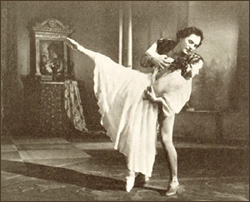 Leonid Lavrovsky (Kirov 1940). Starred Galina Ulanova and Konstantin Sergeyev (pictured right). The first official staging of Prokofiev's score has remained a treasured landmark in Soviet ballet ever since. While it enshrined a prim Soviet attitude to dramatic classical ballet as pose and gesture, the fact that Ulanova, the greatest, most innocently natural of all Russian ballerinas, was its Juliet ensured that when the Bolshoi Ballet finally made their Western debut in the mid-Fifties (1956 in London), the splendour and vividness of the Moscow dramatic style eclipsed any political point.
Leonid Lavrovsky (Kirov 1940). Starred Galina Ulanova and Konstantin Sergeyev (pictured right). The first official staging of Prokofiev's score has remained a treasured landmark in Soviet ballet ever since. While it enshrined a prim Soviet attitude to dramatic classical ballet as pose and gesture, the fact that Ulanova, the greatest, most innocently natural of all Russian ballerinas, was its Juliet ensured that when the Bolshoi Ballet finally made their Western debut in the mid-Fifties (1956 in London), the splendour and vividness of the Moscow dramatic style eclipsed any political point.
Using grand Neo-Classical technique, Lavrovsky made brilliant theatrical capital in musical and dance terms of scenes like Lady Capulet's wailing over Tybalt's body, and in the final tomb scene - episodes written into the music by Prokofiev and which became permanent dramatic challenges to subsequent choreographers. However, the storytelling sweep also overwhelmed the quieter, more private elements of the love story, which made some choreographers choose to attempt different music for the story.
In 1946 the Bolshoi appropriated Lavrovsky, Ulanova and the production, and from then on it became a Bolshoi staple, until Grigorovich supplanted it with a new version in 1978. Both the Mariinsky and the Bolshoi, however, make a habit of bringing their landmark Romeo and Juliet on UK tours.
- The historic DVD recording of the Lavrovsky is Bolshoi Ballet 1954 (with Galina Ulanova and Yuri Zhdanov)
Frederick Ashton (Royal Danish Ballet, 1955). Starred Mona Vangsaa and Henning Kronstam. Ashton had been rejected by Royal Ballet director Ninette de Valois when he suggested doing a full-scale Romeo and Juliet to Prokofiev’s then relatively unfamiliar score (the Bolshoi Ballet had not yet visited London with it), as de Valois felt having his 1948 Cinderella was enough Prokofiev in the repertoire. For the precise and modest Danish dancers, Ashton - who had seen no other versions - kept an intimate scale though he allowed Romeo to handle Juliet’s apparent corpse with what was considered at first distasteful excess. Lynn Seymour thought he was "frightened" by the intensity of the music. Andrew Porter called it "A Lamb’s Tale that became lyric poetry in the duets for the lovers".
After the sensational success of the Bolshoi's 1956 London tour, on which Romeo and Juliet was a smash hit, de Valois asked Ashton to bring his R&J to the Royal Ballet for the Shakespeare 400th anniversary in 1964. Ashton, though about to become her successor as director, felt that a more vigorous approach was needed for a post-Bolshoi audience. Hence he commissioned the young Kenneth MacMillan to create his own. Ashton’s version was revived in 1985 for London Festival Ballet by its then director Peter Schaufuss, the son of the original Juliet, and he now owns it.
John Cranko (Venice 1958 and Stuttgart 1962).
Starring Carla Fracci, the first version Cranko made for an open-air Venetian amphitheatre was not transportable, and his later Stuttgart theatre version became world-renowned, thanks to the remarkable young Marcia Haydee as Juliet. Cranko wanted to echo the dramatic intensity of the Bolshoi version but had a new and smaller company to handle, so toned it down to a more bustling society background, against which the major figures stood out. Frequently revived in recent times by companies wanting to avoid the ubiquitous MacMillan version, Cranko's picked up on some of Lavrovsky's Bolshoi ideas, especially the iconic Lady Capulet mourning scene. 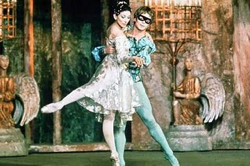 Kenneth MacMillan (Royal Ballet, 1965)
Kenneth MacMillan (Royal Ballet, 1965)
Starred the box-office gold pair Fonteyn and Nureyev (pictured left), against MacMillan’s wishes. He had created the ballet upon and for the tearaway spirits of two younger dancers, Lynn Seymour and Christopher Gable (Seymour had caught his eye when rehearsing Cranko's version). The rising young lion of the Royal Ballet, he was influenced both by the excitement of the Bolshoi London tour and by the new realism in cinema in the Sixties, including Franco Zeffirelli's recent film version of Romeo and Juliet with the very young Olivia Hussey and Leonard Whiting as the lovers.
There are similarities between MacMillan's and his friend and contemporary John Cranko's, but the emotional tone is much more intense and naked. MacMillan's production remains the world's favourite in most ballet countries except for Russia and France, where Lavrovsky and Nureyev still hold first place.
Rudolf Nureyev (London Festival Ballet, 1976)
Starred Nureyev and Patricia Ruanne. Eleven years after his premiere of MacMillan’s Romeo and Juliet, the dancer did his own, stressing social sex and violence, drawing perhaps on memories of the Soviet Union and his own experience of outsidership. He had early on considered using 13th- and 14th-century music, before returning to the Prokofiev. Intrigued by the baroque tradition of boys playing girls, he made Juliet a tomboyish figure, and even at one stage considered casting a boy as her. His pas de deux were more sexy and athletic, less loving - some of the steps were improvisatory. Later he staged it for La Scala Ballet in 1981, in which Fonteyn played Nureyev’s mother-in-law, Lady Capulet. Also staged by Nureyev at Paris Opera Ballet, 1984, when he was artistic director there.
- DVD recordings of the Nureyev include Paris Opera Ballet 1995 (with Monique Loudières and Manuel Legris); there is an illuminating documentary Dancer's Dream: Nureyev's Romeo and Juliet with a filmed performance of the ballet (with Elisabeth Maurin and Manuel Legris).
Other Romeo and Juliet ballets
Serge Lifar (Paris Opera Ballet, 1955, Prokofiev music). "Without marked merit," said the British critic Andrew Porter, having seen six Prokofiev ballets.
Oleg Vinogradov (Novosibirsk Ballet, 1965, Prokofiev music).
Maurice Béjart (Ballet du 20ème Siècle, 1966, music by Berlioz).
Rudi van Dantzig (Dutch National Ballet, 1967 and 1974, music by Prokofiev).
John Neumeier (Frankfurt, 1971, Hamburg 1973 etc).
Yuri Grigorovich (Paris Opera Ballet, 1978, Prokofiev music). An export version of the Bolshoi Lavrovsky staging, starred Patrick Dupond and Dominique Khalfouni. A year later Grigorovich created his own new version for the Bolshoi, starring his wife Natalia Bessmertnova. This is currently in rep at the Bolshoi Ballet (next performances on 6, 7 and 8 November).
- The Grigorovich was recorded by the Bolshoi Ballet (with Bessmertnova and Irek Mukhamedov)
Angelin Preljocaj (Lyon Opera Ballet, 1989). A modern dance vision of lovers torn apart in a modern East European tyranny, performed at Sadler's Wells in 2000.
Mark Morris (Mark Morris Dance Group, 2008, Prokofiev's original "happy ending" music of 1935). This modern dance version attempted a bawdy cross-gender comedy remake, which bombed when it was shown at the Barbican Theatre in 2008.
Derek Deane (English National Ballet, 1998). In-the-round arena version for the Royal Albert Hall, starring Tamara Rojo and Roberto Bolle, borrowing plenty from MacMillan (in which Deane danced many times).
- Birmingham Royal Ballet perform MacMillan's Romeo and Juliet at Sadler's Wells, London, next Tuesday-Thursday; the Pointes of View triple Bill Friday & Saturday
- See what's on at Birmingham Royal Ballet 2010-11
- English National Ballet perform Nureyev's Romeo and Juliet at the Manchester Palace Thurs-next Sun; Southampton Mayflower 20-23 Oct; Milton Keynes Theatre 2-6 Nov; and London Coliseum 5-15 Jan 2011
- See what's on at English National Ballet this year
- The Royal Ballet's current production of MacMillan's Romeo and Juliet is filmed on DVD with Tamara Rojo and Carlos Acosta
- Other DVD recordings of the MacMillan include the Fonteyn-Nureyev Royal Ballet 1966 film, the Royal Ballet 1984 (with Alessandra Ferri and Wayne Eagling), La Scala 2010 (with Alessandra Ferri and Angel Corella)
- See what's on at the Royal Opera House 2010-11
Add comment
The future of Arts Journalism
You can stop theartsdesk.com closing!
We urgently need financing to survive. Our fundraising drive has thus far raised £49,000 but we need to reach £100,000 or we will be forced to close. Please contribute here: https://gofund.me/c3f6033d
And if you can forward this information to anyone who might assist, we’d be grateful.

Subscribe to theartsdesk.com
Thank you for continuing to read our work on theartsdesk.com. For unlimited access to every article in its entirety, including our archive of more than 15,000 pieces, we're asking for £5 per month or £40 per year. We feel it's a very good deal, and hope you do too.
To take a subscription now simply click here.
And if you're looking for that extra gift for a friend or family member, why not treat them to a theartsdesk.com gift subscription?

Comments
...